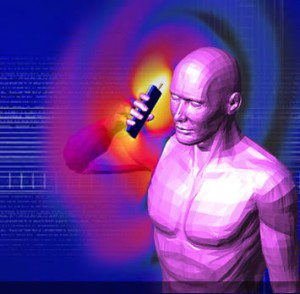4th February 2012
By Sayer Ji
Cell phones and the communications infrastructure that makes them possible, are ubiquitous today, making complete avoidance of their radiation next to impossible. Plenty of evidence already exists showing that cell phones emit a type of electromagnetic radiation — in the microwave range — capable of adversely affecting a wide range of organs, with the nervous system of those exposed perhaps most sensitive to its adverse effects. Below is a sampling of some of their adverse health effects as demonstrated in the biomedical literature.
[pro_ad_display_adzone id=”110028″]
New research indicates that the problems associated with cell phone radiation exposure are far more profound that previously believed. In fact, pregnant women may need to exercise additional caution in order to protect their unborn from adverse neurological effects associated with cell phone radiation exposure.
In a study entitled “The influence of microwave radiation from cellular phone on fetal rat brain,” and published in the journal Electromagnetic Biology and Medicine on Jan. 23rd 2012, researchers discovered that pregnant rats exposed to microwave radiation from cellular phones had fetuses whose brains showed signs of harm, as measured by enhanced oxidative stress and altered levels of neurotransmitters.
| Liver Damage | Fetal Harm | Kidney Damage |
| Interruption of Sleep | Heart Damage | Acoustic Neuroma |
| REM Cycle Disruption | Head Tumors |
For a concise explanation of the mechanism behind cell-phone induced damage, watch Dr. Chris Busby’s video on the topic below:
Given the wide range of potential risks associated with cell phones, we have plumbed the depths of MEDLINE in search of research on natural substances capable of ameliorating cell-phone associated toxicities.
Surprisingly, the little known bee product known as propolis exhibits powerful protective action against cell-phone induced damage to a variety of organs, including the kidney, heart and brain.
Once believed to function merely as mortar for plugging up small holes in the bee hive, propolis is now understood to have powerful antimicrobial properties. The bees use it to mummify animals that make their way into the hive, e.g. lizards, that they can not physically remove before they undergo putrefaction. Propolis’ infection-fighting properties, however, are only the tip of the iceberg when it comes to its potential beneficial effects. There are over 80 potential therapeutic applications of propolis documented in the biomedical literature. Of these 80, propolis’ radio-protective properties are the most intensely investigated. We have, in fact, indexed 12 such studies on its ability to reduce radiation-induced damage, including gamma radiation commonly associated with medical diagnostic and radiotherapy procedures.
Other substances capable of protecting against the radiation specific to the mobile phone range include melatonin, EGCG (green tea polyphenol), ginkgo biloba and the glutathione precursor NAC. To view the studies clikc the image below.
About the author:
Sayer Ji is the founder of GreenMedInfo.com, the world’s largest, evidence-based, open-source, natural medicine database. Follow him on Facebook or Twitter
[pro_ad_display_adzone id=”110027″]







